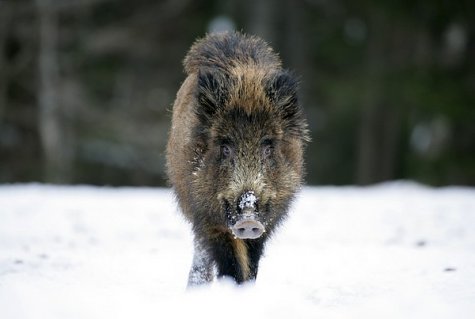Forest Camera News
All Forest Camera News here. Latest articles below:
Rare animal in Estonia’s first period of independence
Photo: Arne Ader
Translation: Liis, from Forum
Translation: Liis, from Forum
Wild boar, Palupõhja, Alam-Pedja Nature Reserve area.
| Wild Boar | Sus scrofa |
”It was an ordinary November day last year (1921) when the forest warden of the Rogos area arrived at the Roosa forestry administration office with the information that a strange creature, never seen before, had appeared in the woods of his district. Since the tracks were similar to pig tracks, only bigger, and since the animal went rooting for potatoes in the fields in nighttime, the joint opinion was that this was a pig, and more precisely a wild boar.
Then, one fine day, January 5th of this year [1922], the forest warden of the Krahi district rushed into the forestry administration office and reported that his dog had discovered the boar in his forest district. There was no time to lose; the head forester, his deputy and the forest warden pulled their clothes on, got on their horses and set off ... The rather lean animal, weighing 4 puuds and 26 naels [see below], met its fate through a shot from head forester Ellram.” So the story was told in the April 1922 issue of Eesti Mets (Estonian Forest). There were then no other hunters who had seen this hoofed creature in Estonia with their own eyes.
Because of a period of cold winters, an exceptional numbers of wolves, and unchecked pursuit by humans, only occasional roaming young boars turned up in Latvian and Estonian areas in the 19th and the beginning of the 20th century. In the 1930ies wild boars appeared in the Alutaguse forests. Some ten years later they were already found in Middle, Northern and Southwestern Estonia, but the cold winter of 1939–1940 killed most of the animals that had settled here.
The wild boar population in Estonia started to increase more vigorously only from the mid-20th century. Today, as we know, boars are to be found everywhere in Estonia
The warm winters, the small number of natural predators, feeding and other factors favourable to the boars have turned the beasts into pests in many places.
PM.
Puud, nael: old weighing measures:
1 puud = 16,4 kg = 40 nael (usually)
1 nael = 409 g









